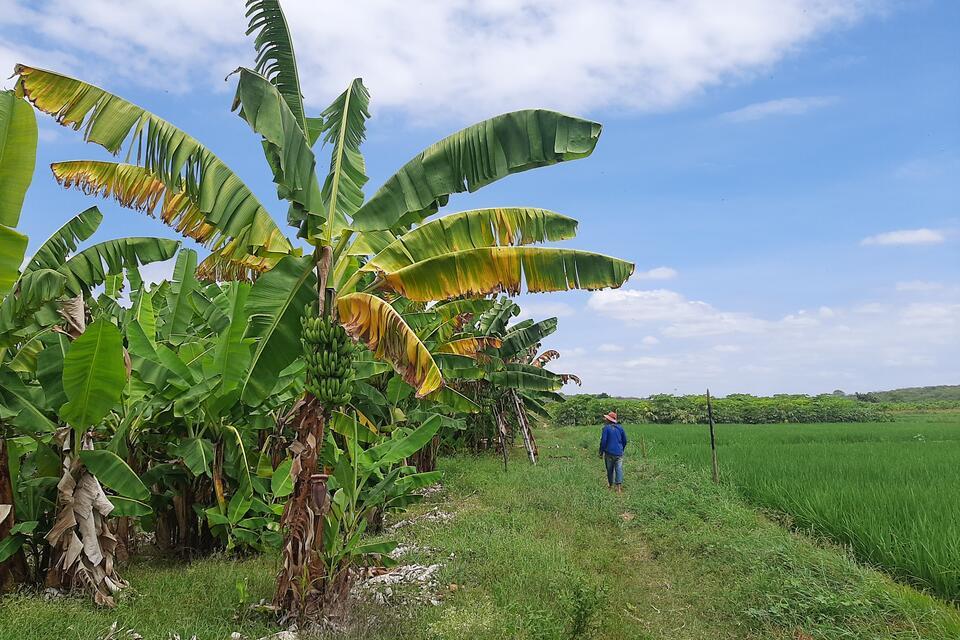Banana farmers in Piura face the hidden cost of Fusarium TR4: The potential to wipe out their livelihoods
- From
-
Published on
25.08.25


More than four years have passed since the first signs of Fusarium Tropical Race 4 (TR4) appeared in Peru. The fungus, scientifically known as Fusarium oxysporum f. sp. cubense TR4, was detected in 2021 in Piura, the country’s leading region for organic banana production. Since then, its presence in Piura has cast a long shadow over an industry that sustains thousands of rural families and supplies one of the world’s most popular fruits. For farmers in Piura, the arrival of TR4 was not simply the outbreak of a new disease, it was the beginning of a long and uncertain struggle for their livelihoods.
TR4 is among the most destructive plant pathogens known in agriculture. Once it infects a banana plant, there is no cure and it can survive in soil for decades, long after infected plants have been removed. Even a small trace of contaminated soil can spread the disease. For regions like Piura, where banana farming is not only an economic activity but also part of the region’s cultural identity, this represents an important threat.
Researchers from the Alliance of Bioversity International and CIAT have been studying TR4 for more than 15 years, working closely with producers and national authorities to design strategies that can reduce its spread. Their most recent study, published in World Development Perspectives, goes beyond the biology of the fungus to reveal its socioeconomic consequences for farmers and their communities.
The study provides insights into the devastation TR4 can cause and the benefits early action can entail. Farmers whose fields are affected by TR4 lose on average 13.7 tons of bananas per hectare each year. For smallholders, this translates into nearly $4,000 USD of lost income per hectare. Over the course of 25 years, the long-term financial viability of banana farming becomes drastically compromised. For producers affected by TR4, the net present value of their activity stands at just $8,535 USD per hectare, compared with $48,014 USD for unaffected producers.
